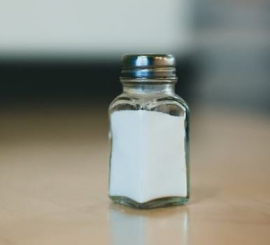
A first-of-its-kind World Health Organisation (WHO) global report on sodium intake reduction shows that the world is off-track to achieve its global target of reducing sodium intake by 30% by 2025.
Sodium, according to the WHO, is an essential nutrient, which increases the risk of heart disease, stroke and premature death when eaten in excess.
The main source of sodium is table salt, but it is also contained in other condiments such as sodium glutamate.
The report shows that only 5% of WHO Member States are protected by mandatory and comprehensive sodium reduction policies and 73% of them lack the full range of implementation of such policies.
“Implementing highly cost-effective sodium reduction policies could save an estimated seven million lives globally by 2030,” the agency explained.
The WHO said the policies are an important component of action to achieve the Sustainable Development Goal target of reducing deaths from non-communicable diseases.
However, today, only nine countries – Brazil, Chile, Czech Republic, Lithuania, Malaysia, Mexico, Saudi Arabia, Spain and Uruguay – have a comprehensive package of recommended policies to reduce sodium intake.
“Unhealthy diets are a leading cause of death and disease globally, and excessive sodium intake is one of the main culprits,” said WHO Director-General, Dr Tedros Adhanom Ghebreyesus.
“This report shows that most countries are yet to adopt any mandatory sodium reduction policies, leaving their people at risk of heart attack, stroke, and other health problems.”
He has called on all countries to implement the “best buys” for sodium reduction, and on manufacturers to implement the WHO benchmarks for sodium content in food.
A comprehensive approach to sodium reduction includes adopting mandatory policies and WHO’s four “best buy” interventions related to sodium, which greatly contribute to preventing non-communicable diseases.
These include:
- Reformulating foods to contain less salt, and setting targets for sodium in foods and meals.
- Establishing public food procurement policies to limit salt or sodium-rich foods in public institutions such as hospitals, schools, workplaces and nursing homes.
- Front-of-package labelling helps consumers select products lower in sodium.
- Behaviour change communication and mass media campaigns to reduce salt/sodium consumption.
Countries are encouraged to establish sodium content targets for processed foods, in line with the WHO Global Sodium Benchmarks and enforce them through these policies.
The global average salt intake is estimated to be 10.8 grams per day, more than double the WHO recommendation of fewer than 5 grams of salt per day (one teaspoon).
Eating too much salt makes it the top risk factor for diet and nutrition-related deaths.
More evidence is emerging documenting links between high sodium intake and increased risk of other health conditions such as gastric cancer, obesity, osteoporosis, and kidney disease.
The WHO called on Member States to implement sodium intake reduction policies immediately and mitigate the harmful effects of excessive salt consumption.
The agency also called on food manufacturers to set ambitious sodium reduction targets in their products. – SAnews.gov.za


